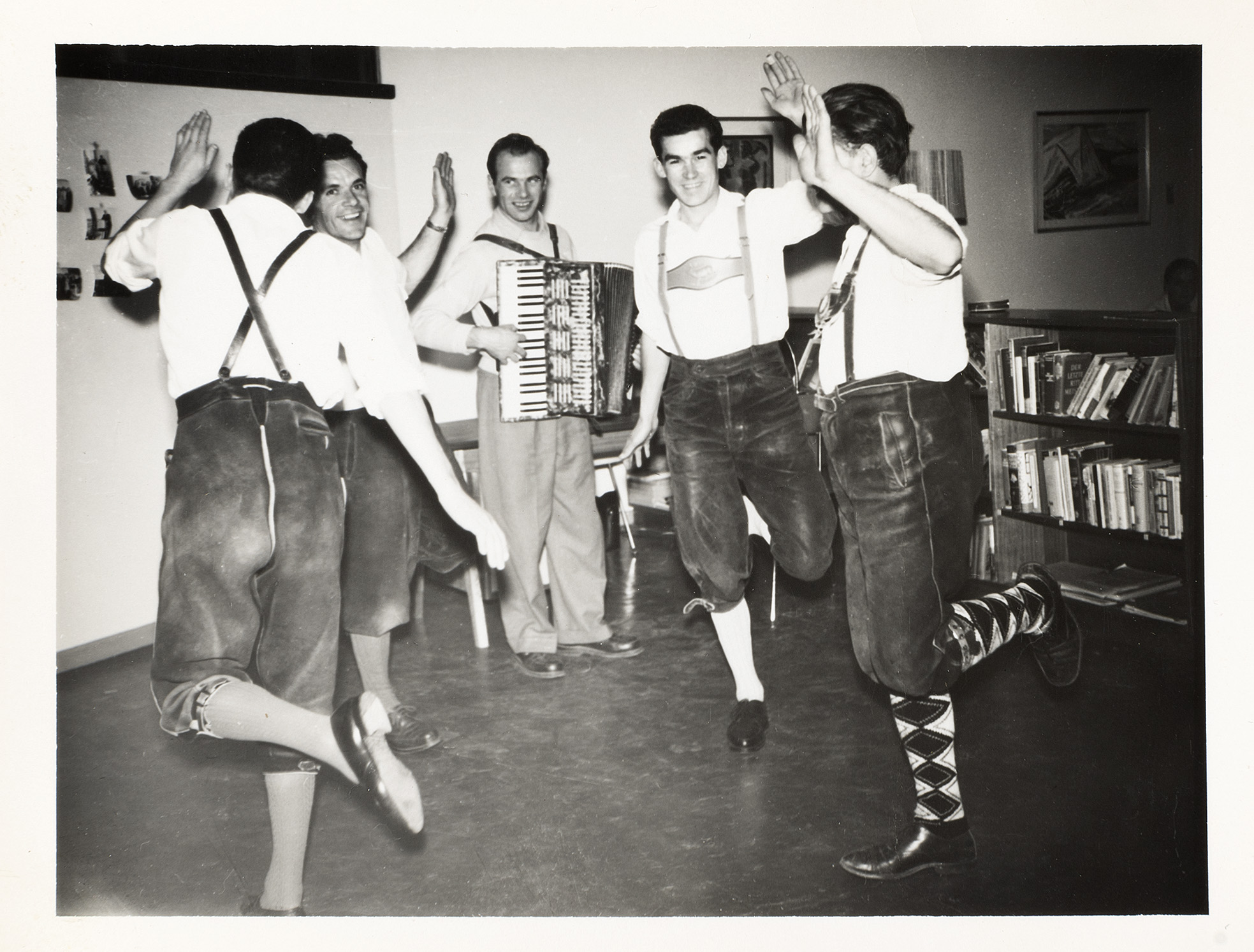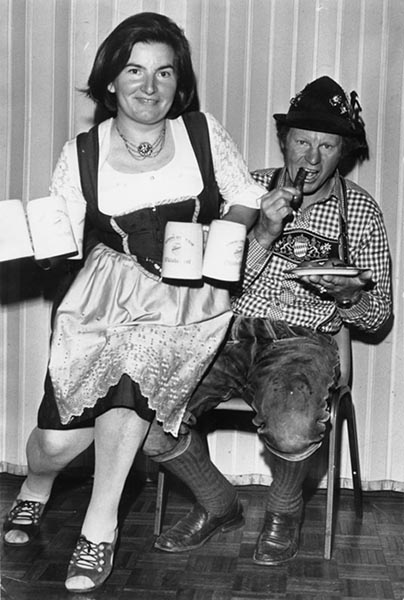
A piece of home
‘Only 40 hours work per week was allowed, meaning that 150 carpenters had a lot of free time for other activities.’ – Alfons Stuetz
You can take the boy out of the country, but you can’t take the country out of the boy. Within weeks of the men arriving, German music, dancing and language could be heard filtering through the hills of Canberra.

The popular and much sought after Jennings Germans band
As they settled into their new home the Jennings Germans began to subtly infuse German culture into the capital and beyond. Several of the men were talented musicians, and they formed a successful and much sought-after band. Featuring Heinrich Stoeckl on accordion, Josef Janetschke on trumpet and clarinet, Kurt Klemmer on drums and Walter Hengge on guitar, the group were an immediate hit and were often asked to play at functions around the city. Soon ‘that German band’ were known around the capital. Locals realised they liked the music … and that the men making it weren’t so bad either.
A soccer team was formed with the men playing teams of other migrants from Europe. Many of the men became members of the YMCA, joining in on activities in the region including swimming, skiing, bushwalking and dances – often in their lederhosen!

Members of the Jennings Germans dancing at a party, c.1952
Several of the Jennings Germans were founding members of the Harmonie German Club. Built in Narrabundah in the early 1960s, it became a place to gather and celebrate and remains a popular meeting place today. The name ‘Harmonie’ was chosen in the hope that the club would be an inclusive and harmonious place, and indeed it was one of the first multi-cultural clubs in the city. The men contributed financially as well as giving their time and skills each weekend to literally build the club from the ground up.

Original Harmonie German Club sign, 1964 - When translated it reads ‘Harmony allows small things to grow, but big things wither where harmony is lacking’.
Via the club, the German Harmonie Choir was formed in 1968, and ran for almost 50 years. Members were originally Jennings Germans, their partners and friends, though expanded to include others over the years. The choir toured Australia and won numerous awards, and even sung at the opening of Australian Parliament House. A German dance group for children was also formed, with many of the second-generation Jennings Germans signed up by their parents for traditional lessons.

Lotte and Edgar Weiss celebrate Octoberfest in the capital, 1975
A few of the men also built their own homes in the traditional German style, complete with wooden shutters, window boxes and wall murals. Kurt Kloska’s impressive home was built in Ainslie and featured in the Canberra Times in 1965. It is still an icon of the suburb today. Similarly, Paul Goener’s house in Glenbrook NSW replicated (both inside and out) the Black-Forest Bavarian style and featured on several TV shows.
Additional German cultural events have included bringing Octoberfest to Canberra, as well as German food markets and a language school.
The continued presence and influence of the Jennings Germans, along with many other migrants who arrived in the 1950s helped to make Canberra a more multi-cultural, diverse and accepting place, and smoothed the way for the migrants who would come after them.




 Visit the CMAG website
Visit the CMAG website